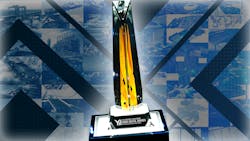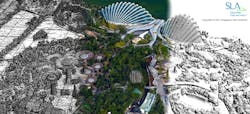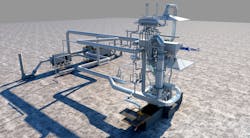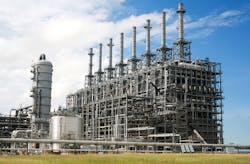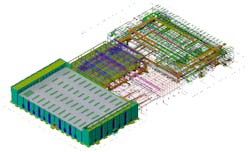For the second year in a row, Bentley Systems Inc.’s annual Year in Infrastructure Conference was held virtually. This year’s program (Dec. 1-2) reinforced key themes in digital transformation, including the themes of resilience and adaptation of organizations and their infrastructure assets.
“As we get back better, we’re all prioritizing improvements to our physical infrastructure for fitness to changing purposes,” said Bentley CEO Greg Bentley during his keynote presentation. “This includes resilience to unexpected circumstances, such as environmental concerns and adaptation, including necessary energy transition.”
Attendees from across the globe tuned in to hear executive perspectives from the Bentley brothers, Greg and Keith (CTO); as well as Matthias Rebellius, CEO, Siemens Smart Infrastructure and member of the managing board of Siemens AG; and Andrej Avelini, president of AEC Advisors.
Greg Bentley shared updates on the company’s strategic investments and its go-to-market alliance with Siemens, a partnership aimed at federating cloud services for advanced infrastructure.
The two companies have been partnering for the past five years, noted Bentley. The collaboration started as an R&D partnership, and later the companies leveraged Bentley’s physical infrastructure modeling and Siemens’ functional or schematic modeling. Both entities were able to shore up digital twin services as a result of the relationship, albeit from different perspectives in the infrastructure supply chain. At the heart of the partnership is a shared vision for creating digital twins for different verticals, with enhanced technologies, noted Rebellius.
Digital Co-ventures Support Future Proofing
Greg Bentley pointed out that governments are now talking about “building back better," but that “even new funding amounts and trillions can’t go very far in adding new infrastructure capacity.” Instead, the greatest opportunity, he said, is in extending the life and the throughput of existing infrastructure in ways that are safe, reliable and clean. “That’s where digital twins come into their own,” he said.
The Build Back Better Framework is the U.S. government’s framework for meeting climate goals, creating jobs and growing the economy. For Bentley, “building back better” requires organizations to build resilience and to adapt existing assets. The collaboration between Bentley and Siemens supports the work of future-proofing, he said.
Rebellius highlighted key trends and areas of investment that have driven Siemens’ strategic focus over the past few years. Among the opportunities, he said, are the electrification and automation of rail networks; the global transformation of energy systems (going from fossil fuels to renewable energy); the optimizing the process of building digital twins; building sustainable communities (including building smart cities and buildings); and the lessons learned from the effects of the pandemic, such as the acceleration of digitalization.
Bentley pointed to the electrification of rail as just one example of software collaboration between Bentley and Siemens. Europe can’t possibly meet net zero goals without electrifying all of the remaining rail networks, he said. In order to make progress, current systems would need to ramp up considerably if it wants to be more economical and industrialized. Siemens recognized that it could integrate its catenary design software with their other design functions, but that it could also generalize it for any manufacturer’s equipment.
Working with Bentley, the formerly proprietary software evolved to an open-source solution, and Bentley’s OpenRail, Overhead Line Designer were developed to enable automation and become part of the overall rail design environment currently enabling electrification.
A National Digital Twin
New to this year’s celebrations, the Bentleys recognized 22 Founders’ Honorees, representing organizations or individuals whose undertakings contribute notably to infrastructure advancement and environmental and social development goals. Among these honorees, Singapore Land Authority was recognized for its effective use of limited land resources on the island nation of Singapore.
Starting in 2012, Singapore Land Authority developed a 3D map of the island. This project was completed in 2017. Since then the project has been updated using Bentley applications (ContextCapture and Orbit 3DM) to create a detailed reality mesh. The application rendered accurate representation, to within 0.1 meters.
Going Digital Award Winner for Manufacturing
Winners of the 2021 Going Digital Awards in Infrastructure were announced on Day 2 of the conference (Dec. 2) as part of Bentley’s Year in Infrastructure virtual event. The awards honor the work of Bentley software users advancing infrastructure design, construction and operations. The awards were judged by 16 independent jury panels who selected the 57 finalists from nearly 300 nominations submitted by more than 230 organizations from 45 countries encompassing 19 categories.
As part of the judging process, finalists had a chance to tell their stories of leveraging digital advancements to achieve unprecedented outcomes on Nov. 1, 8, 15 and 22.
The winner in the manufacturing category, WISDRI Engineering & Research Incorporation Limited, was selected for its work as the general contractor on a converter-based continuous casting project, the Jinnan Steel Phase II Quwo Base Capacity Reduction and Replacement Project, located in Quwo, Shanxi, China.
The project owner, Jinnan Steel Group, invested in the Quwo Group (a merger of two steel production plants) to optimize the plant’s industrial layout and achieve higher production quality, efficiency and sustainability. Completion of the project was compounded by limited space and a tight schedule amid COVID-19. Based in Wuhan, China, the company changed their processes to support remote working across 16 disciplines and to support interaction with their client, noted Anne-Marie Walters, Industry Marketing Director – Process & Resources Industries, Bentley Software. The group sought to streamline workflows and identify risks in advance through collaborative design and construction simulation technology.
The project employed a range of Bentley tools—including ProjectWise and Bentley’s open modeling applications—to design the advanced 12-billet steel casting plant. In addition, constructing prefabricated modules offsite helped to keep the project on schedule during the lockdown. The manufacturing category jurors commended the project for designing a plant that significantly reduces carbon emissions and energy usage, as well as for using Bentley’s SYNCHRO 4D to safely plan and execute the fast-track construction timeline after the lockdown was lifted.
Two other finalists in this category were:
- Dow Chemical – Integration of Advanced Work Packaging (AWP) into Global Project Methodology, Houston, Tex.
- Shenyang Aluminum & Magnesium Engineering & Research Institute Co., Ltd. – Phase II C5 Plant Digital Twin Application Project of Neusoft Healthcare International Industrial Park, Shenyang, Liaoning, China
Click here for a complete list of the winners and project categories and descriptions.

